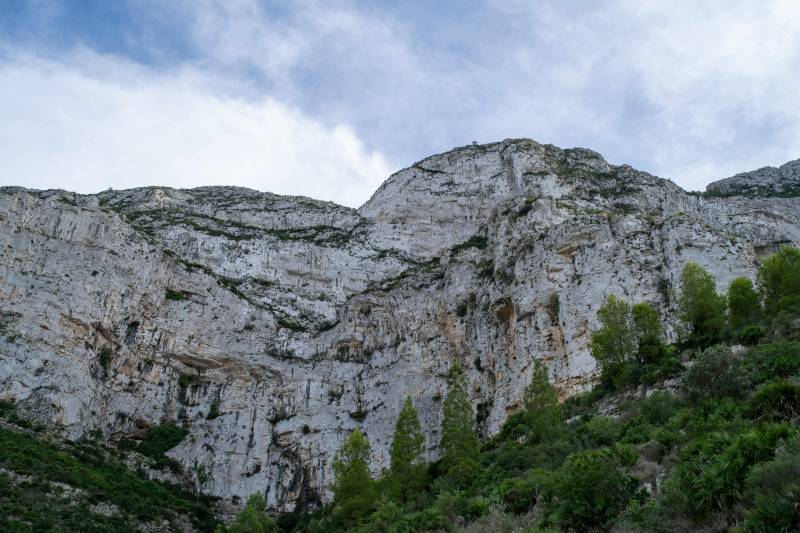- Region
- Vega baja
- Marina Alta
- Marina Baixa
- Alicante
- Baix Vinalopo
- Alto & Mitja Vinalopo
-
ALL TOWNS
- ALICANTE TOWNS
- Albatera
- Alfaz Del Pi
- Alicante City
- Alcoy
- Almoradi
- Benitatxell
- Bigastro
- Benferri
- Benidorm
- Calosa de Segura
- Calpe
- Catral
- Costa Blanca
- Cox
- Daya Vieja
- Denia
- Elche
- Elda
- Granja de Rocamora
- Guardamar del Segura
- Jacarilla
- Los Montesinos
- Orihuela
- Pedreguer
- Pilar de Horadada
- Playa Flamenca
- Quesada
- Rafal
- Redovan
- Rojales
- San Isidro
- Torrevieja
- Comunidad Valenciana
Alcoy Today
 The “City of Bridges” in the north of Alicante is renowned for its spectacular landscapes
The “City of Bridges” in the north of Alicante is renowned for its spectacular landscapes
Alcoy, in the mountains of the north of the province of Alicante, is far removed from the stereotype of a Costa Blanca town, and is well known for the spirit of its inhabitants in a relatively hostile environment over the course of a long  history.
history.
The location of Alcoy is one of its defining features. It stands at 562 metres above sea level in a landscape characterized by spectacular mountains, gullies, ravines and gorges, and even the climate here is substantially different from most of the rest of Alicante. Snow is far from uncommon during the winter, and the temperature is usually a good 4 to 5 degrees cooler than in the provincial capital. In addition, rainfall is almost double that of the city of Alicante, and the water gathers in the three rivers, all tributaries of the Serpis, which meet in the valley of Alcoy (the Riquer, the Benisaidí and the Molinar).
These rivers and the abundance of food in the mountains led to there being centres of population in Alcoy in prehistoric times, when the Iberian culture left ample archaeological evidence of their presence in the Collado del Puig and the Collado de la Serreta: many of the items which have been found are now on display in the archaeological museum, which is itself a remnant of the Gothic and Renaissance architecture which flourished in Alcoy many centuries later.
The strategic importance of Alcoy ensured its survival throughout the Middle Ages, and its military significance  during the battles between Moors and Christians is testified to by structures such as the castle of Barchell, the Torre Na Valora and the Torre de N’Aiça: in the annual Moors and Christians festivities the battle of 1276 is commemorated, during which it is believed that the Moorish chief Al-Azraq lost his life.
during the battles between Moors and Christians is testified to by structures such as the castle of Barchell, the Torre Na Valora and the Torre de N’Aiça: in the annual Moors and Christians festivities the battle of 1276 is commemorated, during which it is believed that the Moorish chief Al-Azraq lost his life.
Alcoy thus remained the most important town in the inland north of Alicante for centuries, but with the arrival of the industrial revolution it experienced a period of exponential growth. The water of the three rivers was used to power paper and flour mills while it became an important centre for the metallurgical and textile industries, and it was at this point, during the 19th century, that Alcoy began to resemble the town which can be visited today. Many of the numerous bridges for which it is famous were built in this period, including those of San Roque, Canalejas, San Jorge and Siete Lunas.
This last one is a particularly poignant reminder of the industrial revolution, as it was built outside the town to carry  the Alicante-Alcoy railway line which, sadly, was never completed. Nonetheless, it is featured on the popular “Route of the Bridges” which visitors can follow as they make their way around the town.
the Alicante-Alcoy railway line which, sadly, was never completed. Nonetheless, it is featured on the popular “Route of the Bridges” which visitors can follow as they make their way around the town.
Other signs of the industrial prosperity which came to Alcoy in the 19th century is the extensive heritage of Modernist architecture in the centre, including the main library, the Casa del Pavo, the façade of the Parque de Bomberos, the Conservatorio and even the cemetery, which is regarded as one of the finest in Spain!
More modern architecture includes the Puente Fernando Ruig (another which is featured on the Route of the Bridges) and the Lonja de Sant Jordi, a Calatrava-designed exhibition centre which is located under the Plaza de España, while of course the parish church, dedicated to Santa María, dominates the old town centre.
It is difficult to explore the whole of Alcoy, and each visitor will find a different line of interest to pursue, but it is fairly safe to say that no visit is complete without some kind of excursion into the countryside. There are two Natural Parks  here, those of Font Roja and the Sierra de Mariola, and these have proved extremely attractive as rural tourist attractions.
here, those of Font Roja and the Sierra de Mariola, and these have proved extremely attractive as rural tourist attractions.
They are popular not only among those who are looking for a break in an unspoilt environment, but also among day trippers from the coast: Alcoy is only around 40 minutes’ drive from Alicante, and under an hour from Benidorm. Visitors typically enjoy the impressive views from outcrops such as the one on which the Ermita de San Cristóbal stands, and the 150-metre vertical rock face of El Salt, where in rainy conditions a waterfall crashes down onto the rocks below.
Neither is Alcoy found wanting when it comes to its gastronomy. The typical local dishes include hearty stews such as the “olleta”, which is based on beans, vegetables and pork, and the “borreta” (potatoes, cod, spinach and egg),  while among lighter specialities is “pericana”, in which the main ingredients are dried peppers, olive oil and salted fish.
while among lighter specialities is “pericana”, in which the main ingredients are dried peppers, olive oil and salted fish.
In addition, there is a claim that it was in Alcoy that the “aceituna rellena” (olive stuffed with anchovy) was first invented, thus providing one of the most universal snacks at bars throughout the country, but despite there being two large producers of this product in the town it is hard to verify.
Even if this story is not true, though, the town and its population (now almost 60,000) can safely lay claim to another vital contribution to the cultural traditions of Spain: on 5th January 1866, the first ever parade to welcome the Three Kings was held on the streets of the town, setting a precedent which has since brought delight to the whole of the country over the intervening 150 years!






























